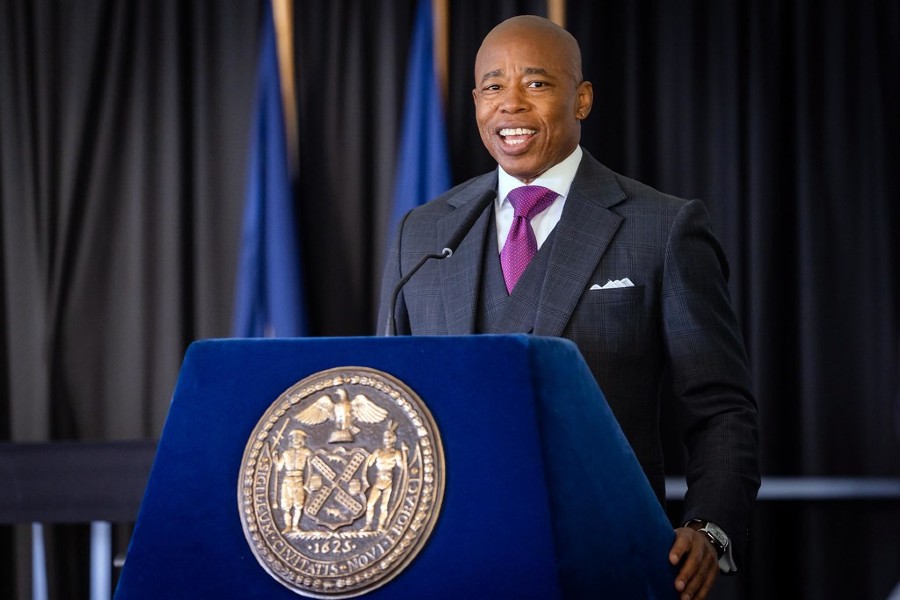 Today, Speaker Melissa Mark-Viverito and New York City Council Members kicked off the voting period for New York City’s 2014-2015 participatory budgeting cycle — now the largest such process in the nation. This year, 24 Council Districts will allocate nearly $30 million citywide for residents to collaboratively develop into local capital projects through a year-long process of neighborhood assemblies, delegate meetings, and project expositions. Voting will take place at over 250 poll sites and mobile voting locations throughout the city from Saturday, April 11th through Sunday, April 19th.
Today, Speaker Melissa Mark-Viverito and New York City Council Members kicked off the voting period for New York City’s 2014-2015 participatory budgeting cycle — now the largest such process in the nation. This year, 24 Council Districts will allocate nearly $30 million citywide for residents to collaboratively develop into local capital projects through a year-long process of neighborhood assemblies, delegate meetings, and project expositions. Voting will take place at over 250 poll sites and mobile voting locations throughout the city from Saturday, April 11th through Sunday, April 19th.
Participatory budgeting is one of our city’s most powerful tools to increase engagement and civic participation for communities who are so often voiceless when it comes public money and neighborhood development…
“Participatory budgeting is one of our city’s most powerful tools to increase engagement and civic participation for communities who are so often voiceless when it comes public money and neighborhood development,” said East Harlem Speaker Melissa Mark-Viverito. “From start to finish, Participatory Budgeting enables residents to creatively propose solutions to real community concerns—whether it’s a new playground, elevator repairs in public housing, or state-of the-art technology for local schools. These are only a few of the project proposals that will be voted on in the week ahead, and I encourage New Yorkers to get involved and vote for what they want to see in their neighborhoods.”
Participatory Budgeting is a grassroots process through which district residents vote directly to allocate at least $1 million in capital funding toward proposals developed by the community to meet local needs. Through a series of public meetings, residents work with elected officials throughout the year to identify neighborhood concerns and craft proposals to address them. Residents then decide which proposals to fund through a public vote.
New Yorkers can visit the New York City Council Participatory Budgeting website at council.nyc.gov/pb to find poll site locations, hours, and a map of proposed projects in their district. Residents can also text “YOUR VOTE” to 212-676-8384 to find out how to participate. Ballots for the 2014-2015 Participatory Budgeting cycle have been designed for clarity and ease of use to maximize participation, and are available in ten languages other than English—Spanish, Chinese, Korean, Russian, Polish, Greek, Haitian Creole, Bengali, Urdu and Yiddish—based on local demographics in participating districts. Several districts will also feature digital voting stations at poll sites as well as pop-up mobile voting sites on commercial strips, in community centers and building lobbies using touch-screen tablets.
Good government groups hail Participatory Budgeting as a powerful tool to increase civic participation and community engagement. Voting in Participatory Budgeting is open to all residents of participating districts 16 years of age and older, with some districts lowering the minimum voting age to 14. The sole identification requirement is proof of residency in the district, removing traditional obstacles to full civic participation such as youth, income status, English-language proficiency and citizenship status. To ensure widespread and diverse voter participation, the New York City Council conducted targeted informational outreach to low-income, NYCHA, non-English speaking, LGBT, formerly incarcerated, and Sandy-affected communities.
16,642 New Yorkers cast ballots in the previous 2013-2014 Participatory Budgeting cycle. According to the Urban Justice Center:
- 2/3 of voters were women
- 49% of voters reported household incomes below $50,000 per year
- 62% of voters identified as a person of color
- 36% of voters this cycle were born outside the U.S.
For the 2014-2015 cycle, twenty-four Council Members facilitated Participatory Budgeting in their districts.
Become a Harlem Insider!
By submitting this form, you are consenting to receive marketing emails from: Harlem World Magazine, 2521 1/2 west 42nd street, Los Angeles, CA, 90008, https://www.harlemworldmagazine.com. You can revoke your consent to receive emails at any time by using the SafeUnsubscribe® link, found at the bottom of every email. Emails are serviced by Constant Contact








